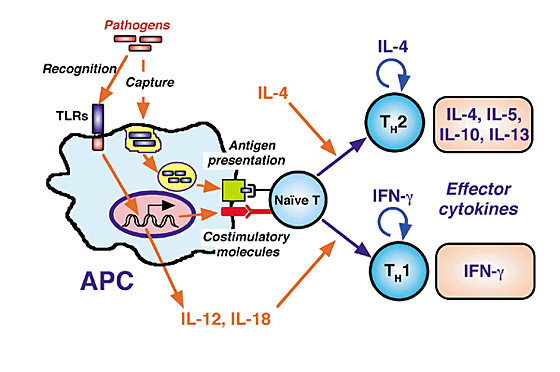TLR7A: Structure, Function, and Role in Innate Immunity – A Complete Guide

The TLR7A gene encodes a toll-like receptor (TLR) that plays a crucial role in the innate immune system. Toll-like receptors are pattern recognition receptors (PRRs) that detect conserved molecular patterns from pathogens, triggering immune responses. Specifically, TLR7A is known to recognize single-stranded RNA (ssRNA) molecules, which are commonly present in many viruses. This recognition initiates signaling pathways that lead to the production of interferons and other pro-inflammatory cytokines, enabling the body to mount a rapid defense against viral infections. TLR7A is part of the larger TLR7 family, but in certain species, it exists as a duplicated or variant form distinct from TLR7B, giving it specialized immune functions.
Genetic and Molecular Structure of TLR7A
The TLR7A gene is located on the X chromosome in many vertebrates, including fish and birds, though its exact chromosomal position can vary by species. Structurally, TLR7A encodes a transmembrane protein with three main domains: an extracellular leucine-rich repeat (LRR) domain responsible for ligand recognition, a transmembrane region that anchors the receptor to endosomal membranes, and an intracellular Toll/interleukin-1 receptor (TIR) domain responsible for signal transduction. The LRR domain is particularly important, as its horseshoe-shaped structure allows TLR7A to bind ssRNA fragments with high specificity. Variations in these domains can affect the receptor’s sensitivity and pathogen recognition spectrum.
Evolutionary Perspective of TLR7A
From an evolutionary standpoint, TLR7A represents a diversification of the TLR7 lineage. Many teleost fish and amphibians have two paralogs, TLR7A and TLR7B, likely resulting from whole-genome duplication events. This duplication allowed one copy to evolve specialized functions while maintaining core viral recognition capabilities. TLR7A often retains a broader ligand recognition profile, while TLR7B may have adapted to detect more specific viral sequences. The evolutionary retention of TLR7A suggests its critical role in maintaining robust antiviral immunity across diverse environmental conditions, from aquatic to terrestrial ecosystems.
Biological Role in Innate Immunity
The primary function of TLR7A is to detect ssRNA within endosomal compartments of immune cells such as macrophages, dendritic cells, and B cells. Once ssRNA binds to the receptor’s extracellular LRR domain, TLR7A undergoes conformational changes that enable its TIR domain to recruit adaptor proteins, notably MyD88 (myeloid differentiation primary response 88). This interaction triggers a signaling cascade that activates transcription factors such as NF-κB and IRF7, leading to the expression of type I interferons and inflammatory cytokines. This rapid immune activation helps contain viral replication before the adaptive immune system is fully mobilized.
Expression Patterns of TLR7A
TLR7A expression varies across tissues and developmental stages. In many vertebrates, high expression levels are observed in immune-related organs such as the spleen, head kidney (in fish), lymph nodes, and thymus. Lower levels may be found in non-immune tissues, where TLR7A likely plays a surveillance role. In teleost fish, TLR7A expression can be upregulated in response to viral challenge, indicating inducible transcriptional control. The receptor’s presence in both innate immune cells and certain epithelial tissues ensures a layered defense against invading pathogens.
TLR7A in Antiviral Defense
One of the most significant contributions of TLR7A is its role in defending against RNA viruses. Upon ssRNA recognition, TLR7A initiates the production of type I interferons (IFN-α, IFN-β) that induce antiviral states in neighboring cells. This includes upregulation of interferon-stimulated genes (ISGs) that interfere with viral replication, assembly, and release. In aquatic species, TLR7A activation has been linked to resistance against viral hemorrhagic septicemia virus (VHSV) and infectious hematopoietic necrosis virus (IHNV). By driving early interferon responses, TLR7A helps limit the spread of infection during the crucial first hours after viral entry.
Signaling Pathway of TLR7A
The TLR7A signaling pathway is MyD88-dependent. Upon ligand binding, the TIR domain of TLR7A recruits MyD88, which then associates with IRAK4 (IL-1 receptor-associated kinase 4) and IRAK1. These kinases phosphorylate downstream targets, leading to activation of TRAF6 (TNF receptor-associated factor 6). TRAF6 then stimulates TAK1 (transforming growth factor-β-activated kinase 1), which activates two major transcriptional pathways: NF-κB for pro-inflammatory cytokine production and IRF7 for interferon gene induction. This dual activation ensures a balanced immune response, targeting viral replication while initiating inflammation to recruit additional immune cells.
Comparative Differences Between TLR7A and TLR7B
In species possessing both TLR7A and TLR7B, functional specialization is evident. TLR7A often shows broader recognition capabilities for a variety of viral RNAs, while TLR7B may exhibit higher specificity for certain viral families. Structural analyses suggest differences in the amino acid composition of their LRR domains, affecting ligand affinity and signaling strength. Expression patterns can also differ: TLR7A is more widely expressed across immune and non-immune tissues, whereas TLR7B may be restricted to certain immune cell subsets. Understanding these differences is critical for designing targeted immunotherapies in veterinary and aquaculture medicine.
TLR7A in Aquaculture and Fish Health
In aquaculture, TLR7A research has significant economic implications. Viral diseases in farmed fish can cause substantial losses, and enhancing TLR7A-mediated immunity could be a valuable strategy for disease control. Experimental vaccines and immune stimulants that activate TLR7A have shown promise in increasing resistance to RNA viral infections. Additionally, measuring TLR7A expression levels in fish populations can serve as an early biomarker for viral exposure, enabling proactive disease management.
TLR7A and Cross-Species Immunology
Studying TLR7A across different species offers valuable insights into the adaptability of innate immunity. While mammalian TLR7 does not have distinct A and B paralogs, comparative genomics shows conserved signaling domains between mammalian TLR7 and teleost TLR7A. This conservation suggests that findings from fish immunology may be translatable to higher vertebrates, particularly in understanding antiviral defense mechanisms. Furthermore, cross-species analysis helps identify residues critical for ligand recognition, which could guide the design of synthetic TLR7A agonists.
Clinical and Veterinary Applications of TLR7A
Potential applications of TLR7A research extend to vaccine adjuvant development, antiviral therapeutics, and immune modulation. Synthetic TLR7A agonists can be used to enhance immune responses to vaccines, particularly against RNA viruses. In veterinary medicine, these agonists could be incorporated into feed additives or immersion treatments for fish, boosting innate immunity before seasonal viral outbreaks. However, overactivation of TLR7A carries the risk of excessive inflammation, so therapeutic use must be carefully balanced.
Regulation of TLR7A Activity
TLR7A regulation is critical to preventing immune overreaction. Endosomal acidification is required for TLR7A activation, and pH modulation within endosomes can fine-tune receptor activity. Negative regulators, such as SOCS proteins and A20, help dampen signaling once a pathogen threat is neutralized. Additionally, alternative splicing of the TLR7A transcript can yield truncated forms that act as dominant-negative inhibitors, reducing sensitivity to ssRNA ligands. This layered regulation ensures that TLR7A activation remains a beneficial, not harmful, immune event.
Challenges in TLR7A Research
Despite advances, TLR7A research faces several challenges. Functional studies are often species-specific, making it difficult to generalize findings. Structural data on TLR7A, especially from non-mammalian species, remain limited, hindering detailed modeling of ligand interactions. Moreover, the complexity of TLR signaling, with its numerous feedback loops and cross-talk with other pathways, makes it challenging to isolate TLR7A’s unique contributions. Overcoming these hurdles will require integrating genomics, proteomics, and functional assays.
Future Perspectives
The future of TLR7A research lies in translational immunology and precision aquaculture. CRISPR-based genome editing could be used to enhance TLR7A function in farmed species, improving viral resistance without compromising growth. Structural biology breakthroughs may enable the design of highly specific TLR7A modulators for therapeutic use. As climate change alters pathogen distributions, understanding and harnessing TLR7A’s immune potential will be increasingly vital for maintaining animal and ecosystem health.
Conclusion
TLR7A is a pivotal component of the innate immune system, particularly in species with duplicated TLR7 genes. Its ability to detect viral ssRNA and trigger robust interferon responses makes it an essential first line of defense against RNA viruses. From molecular structure to aquaculture applications, TLR7A research continues to reveal its importance in both basic science and applied medicine. By deepening our understanding of this receptor, we can develop innovative strategies for disease prevention and immune enhancement across multiple species.



